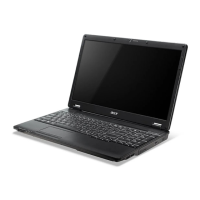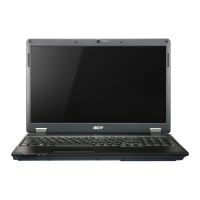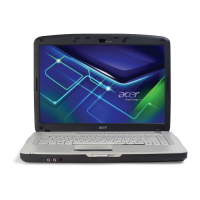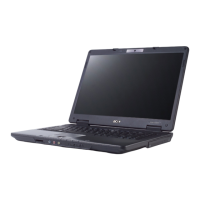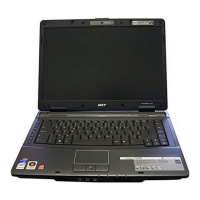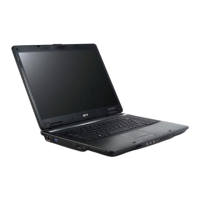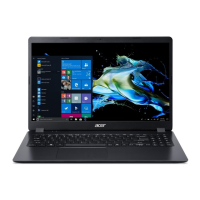Do you have a question about the Acer Extensa 5220 and is the answer not in the manual?
Covers general safety, cleaning, power, listening, and slot dummies.
Precautions against hazards, and guidelines for using electrical power safely.
Safe battery handling, disposal, and device use in explosive environments.
How to turn the computer on/off and care for it and its adapter.
Setting the Empowering Technology password and managing network connections.
Optimizing power usage and managing display output for presentations.
Protecting data, locking drives, and performing system backups/restores.
Details Windows keys, hotkeys for system controls, and special key functions.
Fingerprint security and backup software utilities.
Using security locks and understanding password types.
Creating, burning, and restoring system backups.
Tips and guidance for resolving common system errors and issues.
| Processor cache | 1 MB |
|---|---|
| Processor family | Intel® Celeron® M |
| Processor frequency | 1.86 GHz |
| Processor cache type | L2 |
| Processor manufacturer | Intel |
| Processor front side bus | 533 MHz |
| Motherboard chipset | Intel GL960 Express |
| HDD interface | SATA |
| Card reader integrated | Yes |
| Total storage capacity | 80 GB |
| Display diagonal | 15.4 \ |
| Display resolution | 1280 x 800 pixels |
| Native aspect ratio | 16:10 |
| Display response rise/fall | 16 ms |
| Type | PC |
| TV-in port | No |
| Modem speed | 56 Kbit/s |
| Wireless technology | IEEE 802.11b/g |
| Memory slots | 2x SO-DIMM |
| Internal memory | 0.5 GB |
| Internal memory type | DDR2-SDRAM |
| Maximum internal memory | 2 GB |
| Memory layout (slots x size) | 1 x 0.5 GB |
| Audio system | High Definition Audio |
| Number of built-in speakers | 2 |
| Networking features | Gigabit Ethernet |
| Bundled software | Acer Empowering Technologie (Acer eNet, ePower, ePresentation, eDataSecurity, eLock, eRecovery, eSettings, ePerformance Management), Acer GridVista, Acer Launch Manager, Adobe Reader, Cyberlink PowerDVD, Microsoft Office Ready 2007, NTI CD Maker / NTI Shadow |
| Operating system installed | Windows XP Professional |
| TV-out type | S-Video |
| Charging port type | DC-in jack |
| Serial ports quantity | 0 |
| USB 2.0 ports quantity | 4 |
| CardBus PCMCIA slot type | Type II |
| Cable lock slot type | Kensington |
| Password protection type | BIOS |
| Pointing device | Touchpad |
| Keyboard function keys | 12 |
| Discrete graphics card model | Intel® GMA X3100 |
| Depth | 267 mm |
|---|---|
| Width | 360 mm |
| Weight | 2880 g |
| Height (rear) | 43 mm |
| Height (front) | 30.3 mm |


